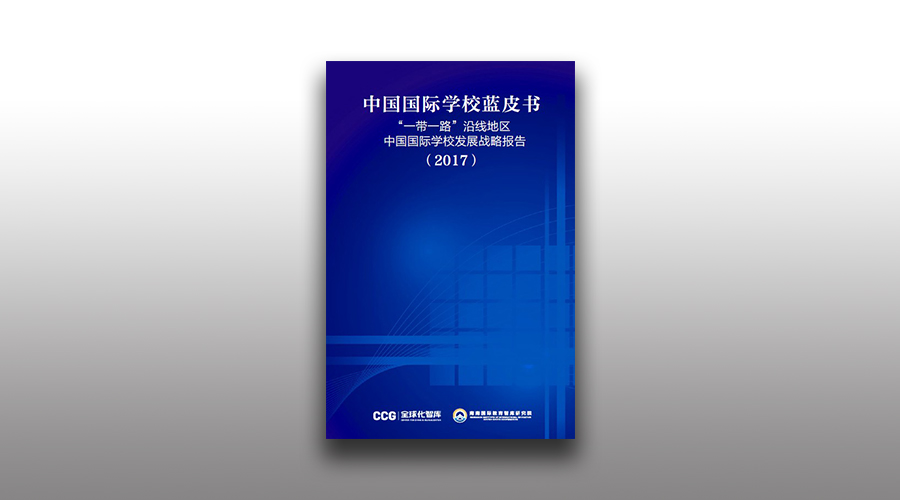全球治理、国际组织、区域合作和“一带一路”是CCG全球化研究领域的重要组成部分。作为中国最早以全球化命名的智库,CCG创办了“中国与全球化论坛”并设置全球化相关国际议题;在海内外举办了“WTO改革”、“多边治理”、“一带一路”等专题研讨会,把“一带一路”这一主题首次带到国际安全与治理领域的世界高规格会议——慕尼黑安全会议。基于多年对全球化领域的全面研究,CCG发布出版了《“一带一路”的国际合作共赢方案及实现路径》,《全球化与逆全球化》、《全球化向何处去:大变局与中国策》等研究报告和图书,其中Edward Elgar 出版社出版的Handbook on China and Globalization是为数不多的由智库在国际权威学术出版社出版的全英文书籍。CCG提出的两项倡议入选首届巴黎和平论坛,为中国智库更充分参与全球治理与国际合作开拓了崭新模式。此外,CCG与WTO、UN 、经济合作国家组织(OECD)、世界银行、国际货币基金组织(IMF)等众多国际组织、国际智库和相关机构建立了良好的长效合作机制。
-

周晓晶:“一带一路”是通向人类命运共同体的高效途径
专家简介
2018年1月4日 -

B&R reshaping economies, trade
Fundamentally different from previous Western model A freight train departs from Nanchang, East China’s Jiangxi Province to Hanoi, capital of Vietnam. Photo: VCG A freight train operated by China Railway Express, which links China and Eurasia, carries tons of daily necessities such as socks and handbags from Yiwu, East China’s Zhejiang Province to London. Those products are in strong demand in the UK. The new freight route, which is part of the Belt and Road (B&R) initiative, also brings authentic British products such as whisky and baby formula to the world’s second-largest economy. In Kenya, the 480-kilometer Mombasa-Nairobi Standard Gauge Railway, which was officially launched in May, is expected to reduce the time for a passenger traveling from Mombasa to Nairobi to merely four and a half hours compared with nearly 10 hours by bus. These are just two of many examples showcasing how the China-proposed B&R initiative is reshaping regional development, global trade and the world economy.China has made rapid inroads since the beginning of the year, and the initiative offers new global governance solutions to the world. The initiative also yielded some positive results in some countries during the year, remarked Wang Yiwei, director of the Institute of International Affairs of Renmin University of China. "In 2017, Sri Lanka handed over the operating rights of the port of Hambantota to China, and the China-Myanmar oil pipeline began operations," he said, noting that China Railway Express also gained momentum by operating more than 6,000 freight trains since 2011. Also, the China-Pakistan Economic Corridor advanced. In general, the majority of related projects are going smoothly, and the B&R has become a familiar topic with many policymakers and investors around the world, the expert noted. Addressing concerns Not all countries applaud the initiative, and some Western media and think tanks have called it "neocolonialism" - a way of expanding Chinese power overseas. After Sri Lanka formally handed over the port to China Merchant Ports Holdings on a 99-year lease in early December, India had to showcase how the Chinese way of infrastructure construction was little more than a modern neocolonial enterprise, according to Indian media reports. Other B&R projects have also raised concerns in the West. With Germany and Belgium both seen growing wary of Chinese investment in Greece, its largest port - Piraeus - mainly owned by COSCO Shipping, serves as China’s new gateway to Europe, the New York Times reported in April."Chinese investment is fundamentally different from that coming from the West decades ago, as some Western projects were aimed at strengthening political allies," said Huang Rihan, an expert with the Beijing-based Center for China & Globalization(CCG). "Take the port of Hambantota as an example. The Sri Lanka Ports Authority still holds 30 percent ownership, which means that local business representatives can be involved in management, the decision-making process and operations," he said. The Chinese model, which prioritizes development, is not only about the participation of Chinese participants but also of local businesses in countries and regions along the B&R route. "As stakeholders, local business groups will enjoy profit-sharing plans after the project starts working. It will bring reciprocal benefits for both sides," Huang said. India had the chance to build the port of Hambantota years ago, but it rejected this option. "Unlike India, which holds an offensive view on regional cooperation, China wants to ’make the cake bigger’ and benefit more people, that’s the fundamental difference," the expert said. In Africa, China set up a base in Djibouti in July, which already has US and French military bases. But the Western countries frame it as just naval facilities, while China is experimenting with Djibouti as a logistics and supply center, which could accelerate local economic growth, Huang noted. Also, a railway that links Djibouti and its neighboring country Ethiopia is expected to upgrade transport in the region and propel intra-Africa trade. Looking forward Despite a growing consensus on the B&R, policymakers and investors need to tackle issues such as expanding financing channels, paving the way for more sustainable projects and tackling rising debts, experts noted. China has tightened control over capital outflows since the beginning of the year, and economic growth in the country has not performed in line with expectations, which posed concerns over outbound investment, Wang said. An increasing volume of debt in countries and regions along the route also raised concerns among investors. Of the 68 nations and regions that are partners engaged in the initiative, 27 have their sovereign debt rated as junk, Bloomberg reported in October. Some projects are now operated under build-operate-transfer contracts, which have require a long period to generate returns for investors. "That has increased the risks," Huang said.Still, the Asian Infrastructure Investment Bank has set some good examples of evaluating the feasibility and profitability of projects, which could be used as a reference by other Chinese companies that invest in overseas markets, he noted. While building up industrial parks in countries along the route is helping accelerate local industrialization process, Chinese companies have to fully localize their business. "The industrial park in Pakistan, for example, will also help local manufacturing grow," Wang with Renmin University said.From January to November, China decreased investment in 59 countries and regions along the B&R route, according to the Ministry of Commerce.The total investment of Chinese companies in non-financial sectors in those economies reached $12.37 billion, down 7.3 percent year-on-year.The trend echoed the call from experts for more cautious outbound investment. "For 2018, it’s important to build up some sustainable projects to prove that the Chinese model is working," Wang said. From Global Times,2017-12-21
2017年12月25日 -

刘燕华:数字化是”一带一路”建设的基础
专家简介
2017年12月21日 -

智库报告:中国国际学校蓝皮书2017
2017年12月15日 -

Grzegorz W.Kolodko:“一带一路”下的“16+1”框架带动中国、东欧国家共赢合作
Grzegorz W. Kolodko,波兰前副总理、CCG国际顾问
2017年11月20日


